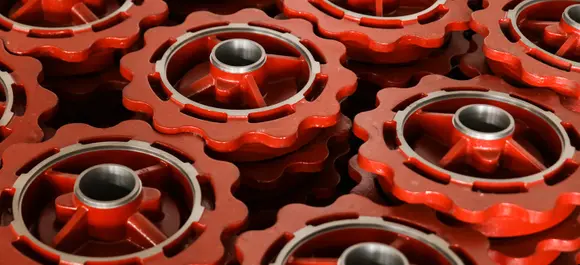Mobile:+86-311-808-126-83
Email:info@ydcastings.com
English
Exploring the Functionality and Importance of Valve Bodies in Automotive Systems and Applications
Understanding the Importance of Valve Bodies in Automotive Transmission Systems
In the world of automotive engineering, the complexity of vehicle transmission systems plays a crucial role in the overall performance and efficiency of a car. At the heart of these systems lies the valve body, a component often overlooked but absolutely vital for the proper functioning of automatic transmissions. This article delves into the significance of valve bodies, their design, and their impact on vehicle performance.
A valve body serves as the control center for an automatic transmission. It is a complex assembly composed of numerous passages, valves, and solenoids that regulate the flow of transmission fluid. By directing this fluid to various parts of the transmission, the valve body controls gear shifts, ensuring that the vehicle operates smoothly and efficiently. The operation of the valve body is integral to maintaining the right amount of pressure in the transmission system, which is essential for effective gear changes.
One of the key functions of the valve body is to facilitate the actuation of clutches and bands within the transmission. As the engine speed changes, the valve body’s sophisticated hydraulic system activates the necessary clutches to engage or disengage gears. This process allows the vehicle to shift seamlessly through different speeds, significantly impacting driving performance. When functioning optimally, the valve body contributes to smooth acceleration and deceleration, enhancing overall driver experience.
valve body

The design of the valve body is intricately linked to the performance characteristics of the transmission. Variations in design can lead to differences in shifting behavior and responsiveness. For instance, performance-oriented valve bodies often feature advanced designs that allow quicker fluid movement and more precise control over shifting points. This responsiveness is critical for high-performance vehicles where quick acceleration and rapid gear changes can mean the difference between winning or losing a race.
In recent years, technological advancements have led to the development of electronically controlled valve bodies. These systems utilize electronic signals from the vehicle’s engine control unit (ECU) to optimize shifting patterns based on driving conditions. The incorporation of sensors allows for real-time adjustments, improving shift quality and fuel efficiency. This technology not only enhances performance but also contributes to reduced wear on transmission components, ultimately extending the lifespan of the vehicle.
However, despite their robust design, valve bodies can experience issues over time. Common problems include sticking valves, internal leaks, and clogging due to debris accumulation. Such issues can lead to erratic shifting, slipping gears, or, in severe cases, complete transmission failure. Regular maintenance and timely fluid changes are essential to prevent these complications. If a valve body issue arises, having a comprehensive diagnostic performed by a qualified technician is crucial, as they can identify the root cause and recommend appropriate repairs or replacements.
In conclusion, the valve body is a fundamental component of automatic transmissions, playing a pivotal role in regulating fluid flow and ensuring efficient operation. Its design and functionality directly affect vehicle performance, making it an area of focus for both drivers seeking enhanced driving experiences and engineers working on advanced automotive technologies. With advancing technologies, the valve body will likely continue to evolve, contributing to the future of automotive transmission systems and paving the way for more efficient and responsive vehicles. Understanding its significance can provide valuable insights into the complexities of modern automotive engineering, empowering car enthusiasts and professionals alike.
-
Premium Fan Housing & Motor Casing for Optimal AirflowNewsAug.31,2025
-
High-Performance Automobile Water Pump & Electric SolutionsNewsAug.30,2025
-
Expert Stainless Steel Casting | Precision & Durable Metal PartsNewsAug.29,2025
-
Precision Metal Castings: Aluminum, Stainless Steel & Die CastingNewsAug.28,2025
-
Superior Aluminum Castings in Automotive Engine PartsNewsAug.22,2025
-
Common Materials Used in Fan Housing ManufacturingNewsAug.22,2025











